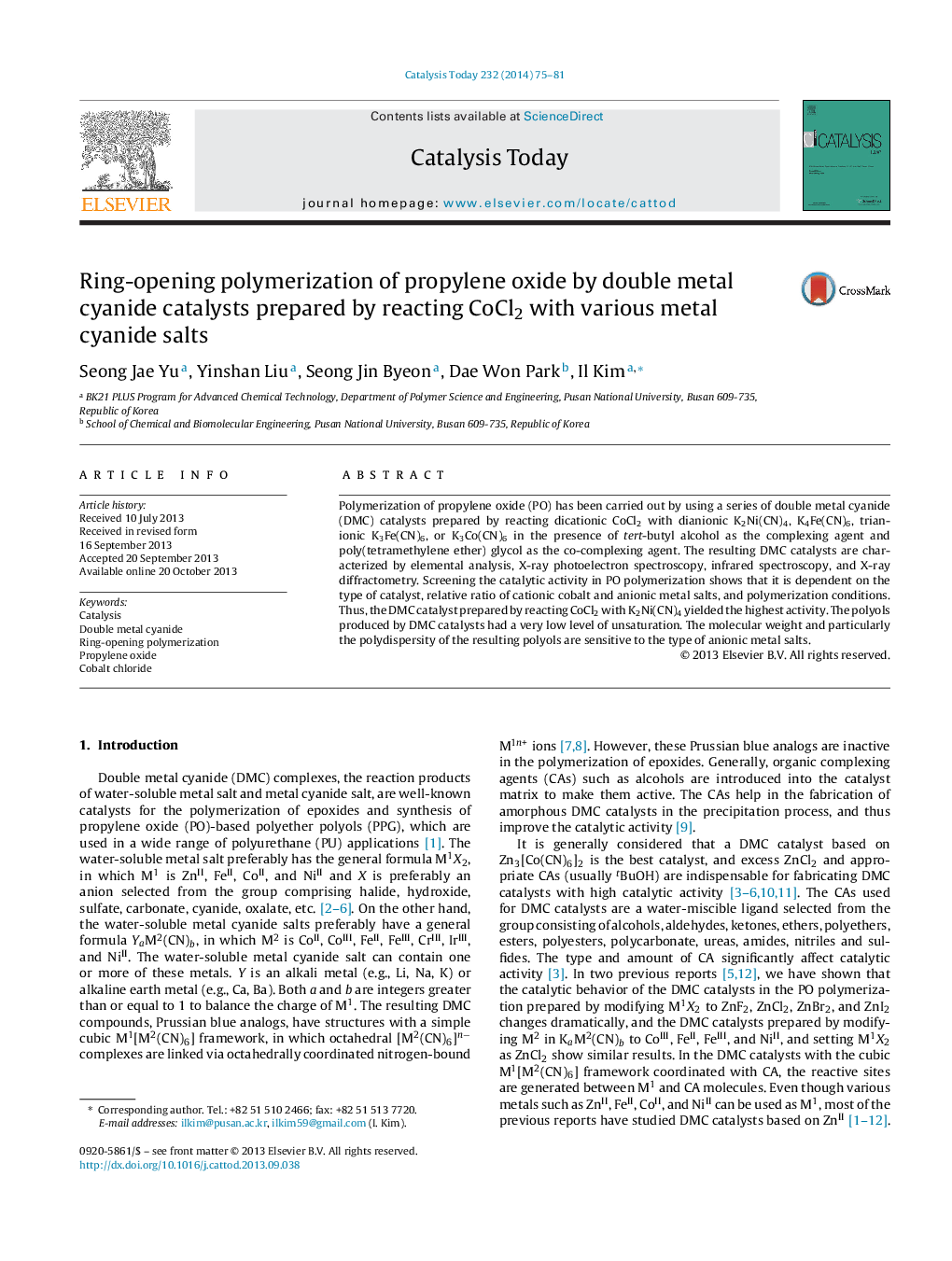| Article ID | Journal | Published Year | Pages | File Type |
|---|---|---|---|---|
| 54458 | Catalysis Today | 2014 | 7 Pages |
•A series of double metal cyanide (DMC) catalysts were prepared.•Cobalt-based DMC catalysts were comprehensively characterized.•The DMC catalysts showed high activity in ring-opening polymerization of propylene oxide.•The choice of metal was an important factor to achieve high catalytic activity.•CoII-NiII DMC catalysts showed the best activity.
Polymerization of propylene oxide (PO) has been carried out by using a series of double metal cyanide (DMC) catalysts prepared by reacting dicationic CoCl2 with dianionic K2Ni(CN)4, K4Fe(CN)6, trianionic K3Fe(CN)6, or K3Co(CN)6 in the presence of tert-butyl alcohol as the complexing agent and poly(tetramethylene ether) glycol as the co-complexing agent. The resulting DMC catalysts are characterized by elemental analysis, X-ray photoelectron spectroscopy, infrared spectroscopy, and X-ray diffractometry. Screening the catalytic activity in PO polymerization shows that it is dependent on the type of catalyst, relative ratio of cationic cobalt and anionic metal salts, and polymerization conditions. Thus, the DMC catalyst prepared by reacting CoCl2 with K2Ni(CN)4 yielded the highest activity. The polyols produced by DMC catalysts had a very low level of unsaturation. The molecular weight and particularly the polydispersity of the resulting polyols are sensitive to the type of anionic metal salts.
Graphical abstractFigure optionsDownload full-size imageDownload high-quality image (141 K)Download as PowerPoint slide
